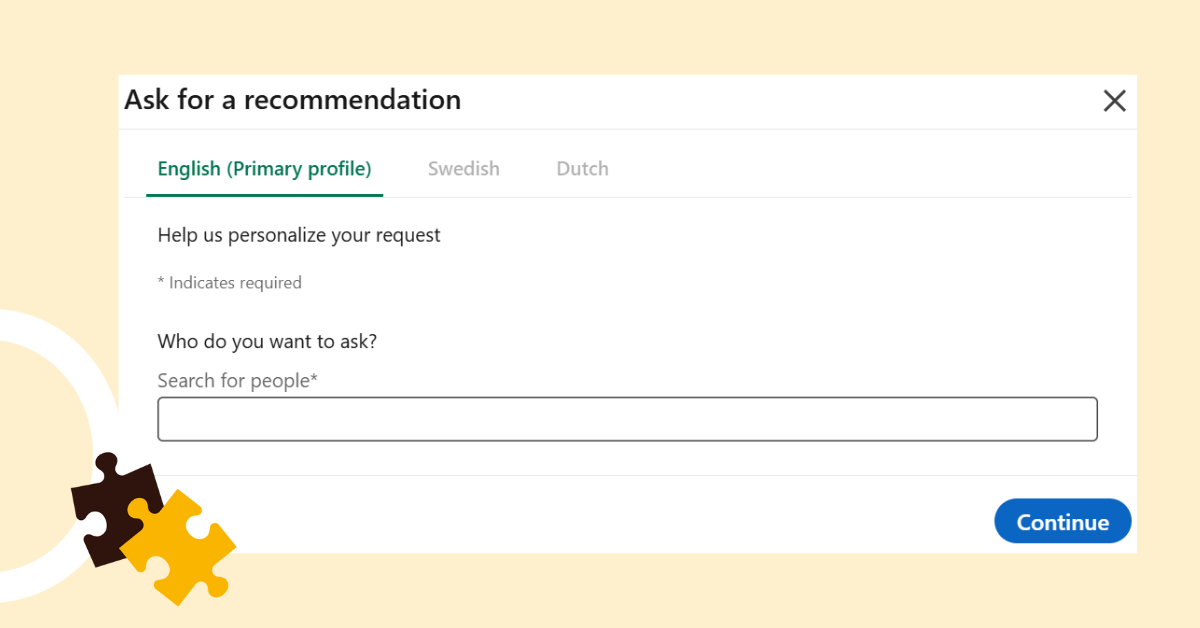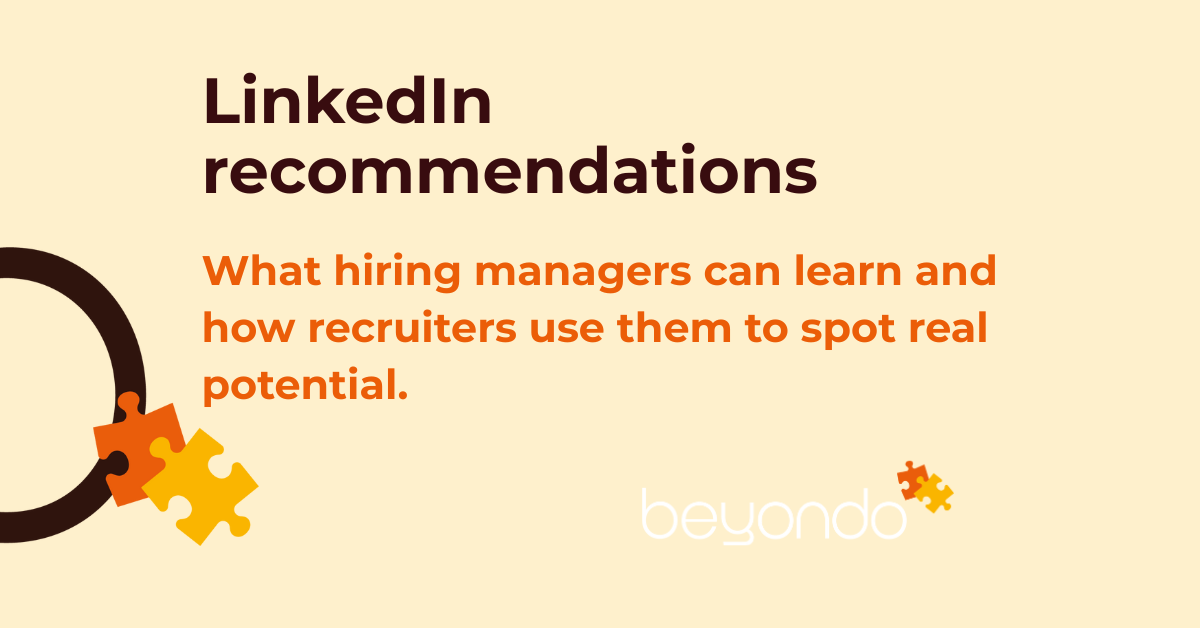Why smart recruiters read between the lines
It started with a profile. Not a CV, not a cover letter — just a LinkedIn page. The hiring manager was scanning through candidates for a mid-level marketing role. One profile stood out, not because of the job titles or the skills listed, but because of the words written by others.
"She brings clarity to chaos," one recommendation read. Another said, "Her ability to unite cross-functional teams is unmatched." These weren’t just compliments — they were insights. And they told a story no CV could.
At Beyondo, we recently published a guide for job seekers on how to ask for and use LinkedIn recommendations to get hired. If you're curious, you can read it here.
But this blog is for the other side of the table. For hiring managers who want to make smarter, faster, and more human decisions.
The data behind the power
LinkedIn recommendations are more than just nice words. They’re social proof — and they influence hiring decisions more than many realise:
- 79% of recruiters consider LinkedIn recommendations a significant factor in hiring decisions (LinkedIn Global Hiring Trends Report, 2024).
- 70% of hiring managers trust LinkedIn recommendations more than traditional references (Jobvite, 2024).
- Profiles with recommendations receive 14x more views, increasing visibility and interview chances (LinkedIn Survey).
- Candidates with recommendations are 50% more likely to accept job offers (Glassdoor Research).
- Companies using recommendations reduce time-to-hire by 20% (LinkedIn Future of Work Report, 2025).
What to look for as a hiring manager
Instead of scanning for generic praise, look for:
- Patterns – Do multiple people mention the same strength? That’s a signal.
- Context – Was the recommendation written by a peer, manager, or client? Each gives a different lens.
- Tone – Is the language formal, warm, or enthusiastic? It can hint at cultural fit.
- Specifics – "Great to work with" is nice. "Led a turnaround project that saved us 15%" is better.

A real-world shortcut
One hiring manager told us: "I use recommendations as a shortcut to understanding how someone works. It’s like getting a reference before the interview."
In fast-paced hiring environments, this shortcut matters. It helps you:
- Spot leadership potential early
- Validate soft skills without a separate test
- Understand how a candidate fits into teams
Final thought: don’t skip the goldmine
LinkedIn recommendations are not just for candidates to feel good — they’re for hiring managers to make smarter decisions. In a competitive market, every insight counts.
So next time you’re reviewing a profile, scroll down. The story you’re looking for might already be written — by someone who worked with the candidate and knows what they’re capable of.
Want to know how candidates are coached to ask for recommendations? Read our candidate-focused post: LinkedIn Recommendations: How to Ask and Get Hired



.png)